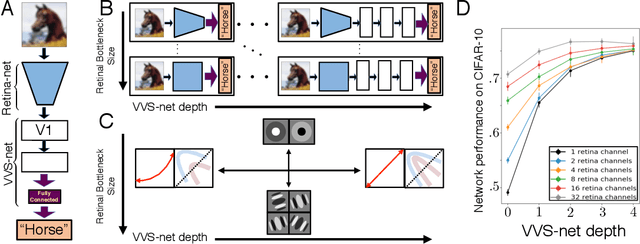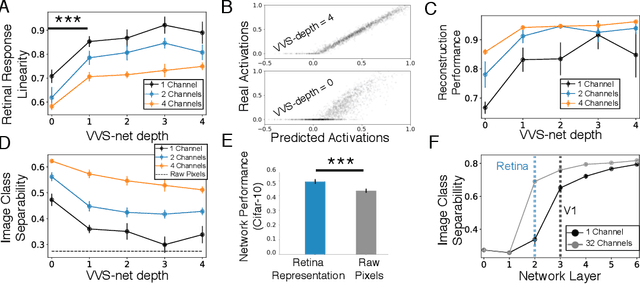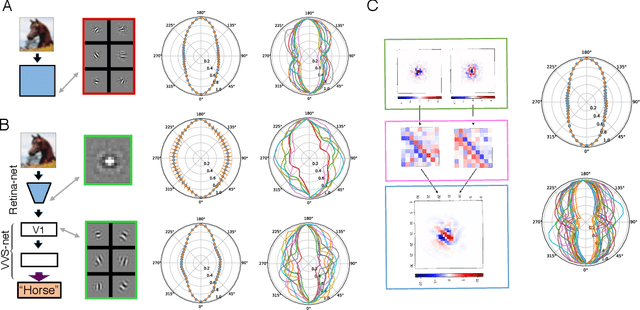Jack Lindsey
Auditing language models for hidden objectives
Mar 14, 2025Abstract:We study the feasibility of conducting alignment audits: investigations into whether models have undesired objectives. As a testbed, we train a language model with a hidden objective. Our training pipeline first teaches the model about exploitable errors in RLHF reward models (RMs), then trains the model to exploit some of these errors. We verify via out-of-distribution evaluations that the model generalizes to exhibit whatever behaviors it believes RMs rate highly, including ones not reinforced during training. We leverage this model to study alignment audits in two ways. First, we conduct a blind auditing game where four teams, unaware of the model's hidden objective or training, investigate it for concerning behaviors and their causes. Three teams successfully uncovered the model's hidden objective using techniques including interpretability with sparse autoencoders (SAEs), behavioral attacks, and training data analysis. Second, we conduct an unblinded follow-up study of eight techniques for auditing the model, analyzing their strengths and limitations. Overall, our work provides a concrete example of using alignment audits to discover a model's hidden objective and proposes a methodology for practicing and validating progress in alignment auditing.
Open Problems in Mechanistic Interpretability
Jan 27, 2025



Abstract:Mechanistic interpretability aims to understand the computational mechanisms underlying neural networks' capabilities in order to accomplish concrete scientific and engineering goals. Progress in this field thus promises to provide greater assurance over AI system behavior and shed light on exciting scientific questions about the nature of intelligence. Despite recent progress toward these goals, there are many open problems in the field that require solutions before many scientific and practical benefits can be realized: Our methods require both conceptual and practical improvements to reveal deeper insights; we must figure out how best to apply our methods in pursuit of specific goals; and the field must grapple with socio-technical challenges that influence and are influenced by our work. This forward-facing review discusses the current frontier of mechanistic interpretability and the open problems that the field may benefit from prioritizing.
Humanity's Last Exam
Jan 24, 2025Abstract:Benchmarks are important tools for tracking the rapid advancements in large language model (LLM) capabilities. However, benchmarks are not keeping pace in difficulty: LLMs now achieve over 90\% accuracy on popular benchmarks like MMLU, limiting informed measurement of state-of-the-art LLM capabilities. In response, we introduce Humanity's Last Exam (HLE), a multi-modal benchmark at the frontier of human knowledge, designed to be the final closed-ended academic benchmark of its kind with broad subject coverage. HLE consists of 3,000 questions across dozens of subjects, including mathematics, humanities, and the natural sciences. HLE is developed globally by subject-matter experts and consists of multiple-choice and short-answer questions suitable for automated grading. Each question has a known solution that is unambiguous and easily verifiable, but cannot be quickly answered via internet retrieval. State-of-the-art LLMs demonstrate low accuracy and calibration on HLE, highlighting a significant gap between current LLM capabilities and the expert human frontier on closed-ended academic questions. To inform research and policymaking upon a clear understanding of model capabilities, we publicly release HLE at https://lastexam.ai.
Action-modulated midbrain dopamine activity arises from distributed control policies
Jul 01, 2022



Abstract:Animal behavior is driven by multiple brain regions working in parallel with distinct control policies. We present a biologically plausible model of off-policy reinforcement learning in the basal ganglia, which enables learning in such an architecture. The model accounts for action-related modulation of dopamine activity that is not captured by previous models that implement on-policy algorithms. In particular, the model predicts that dopamine activity signals a combination of reward prediction error (as in classic models) and "action surprise," a measure of how unexpected an action is relative to the basal ganglia's current policy. In the presence of the action surprise term, the model implements an approximate form of Q-learning. On benchmark navigation and reaching tasks, we show empirically that this model is capable of learning from data driven completely or in part by other policies (e.g. from other brain regions). By contrast, models without the action surprise term suffer in the presence of additional policies, and are incapable of learning at all from behavior that is completely externally driven. The model provides a computational account for numerous experimental findings about dopamine activity that cannot be explained by classic models of reinforcement learning in the basal ganglia. These include differing levels of action surprise signals in dorsal and ventral striatum, decreasing amounts movement-modulated dopamine activity with practice, and representations of action initiation and kinematics in dopamine activity. It also provides further predictions that can be tested with recordings of striatal dopamine activity.
Sequence Learning and Consolidation on Loihi using On-chip Plasticity
May 02, 2022


Abstract:In this work we develop a model of predictive learning on neuromorphic hardware. Our model uses the on-chip plasticity capabilities of the Loihi chip to remember observed sequences of events and use this memory to generate predictions of future events in real time. Given the locality constraints of on-chip plasticity rules, generating predictions without interfering with the ongoing learning process is nontrivial. We address this challenge with a memory consolidation approach inspired by hippocampal replay. Sequence memory is stored in an initial memory module using spike-timing dependent plasticity. Later, during an offline period, memories are consolidated into a distinct prediction module. This second module is then able to represent predicted future events without interfering with the activity, and plasticity, in the first module, enabling online comparison between predictions and ground-truth observations. Our model serves as a proof-of-concept that online predictive learning models can be deployed on neuromorphic hardware with on-chip plasticity.
Learning to Learn with Feedback and Local Plasticity
Jun 16, 2020
Abstract:Interest in biologically inspired alternatives to backpropagation is driven by the desire to both advance connections between deep learning and neuroscience and address backpropagation's shortcomings on tasks such as online, continual learning. However, local synaptic learning rules like those employed by the brain have so far failed to match the performance of backpropagation in deep networks. In this study, we employ meta-learning to discover networks that learn using feedback connections and local, biologically inspired learning rules. Importantly, the feedback connections are not tied to the feedforward weights, avoiding biologically implausible weight transport. Our experiments show that meta-trained networks effectively use feedback connections to perform online credit assignment in multi-layer architectures. Surprisingly, this approach matches or exceeds a state-of-the-art gradient-based online meta-learning algorithm on regression and classification tasks, excelling in particular at continual learning. Analysis of the weight updates employed by these models reveals that they differ qualitatively from gradient descent in a way that reduces interference between updates. Our results suggest the existence of a class of biologically plausible learning mechanisms that not only match gradient descent-based learning, but also overcome its limitations.
A Unified Theory of Early Visual Representations from Retina to Cortex through Anatomically Constrained Deep CNNs
Jan 03, 2019



Abstract:The visual system is hierarchically organized to process visual information in successive stages. Neural representations vary drastically across the first stages of visual processing: at the output of the retina, ganglion cell receptive fields (RFs) exhibit a clear antagonistic center-surround structure, whereas in the primary visual cortex, typical RFs are sharply tuned to a precise orientation. There is currently no unified theory explaining these differences in representations across layers. Here, using a deep convolutional neural network trained on image recognition as a model of the visual system, we show that such differences in representation can emerge as a direct consequence of different neural resource constraints on the retinal and cortical networks, and we find a single model from which both geometries spontaneously emerge at the appropriate stages of visual processing. The key constraint is a reduced number of neurons at the retinal output, consistent with the anatomy of the optic nerve as a stringent bottleneck. Second, we find that, for simple cortical networks, visual representations at the retinal output emerge as nonlinear and lossy feature detectors, whereas they emerge as linear and faithful encoders of the visual scene for more complex cortices. This result predicts that the retinas of small vertebrates should perform sophisticated nonlinear computations, extracting features directly relevant to behavior, whereas retinas of large animals such as primates should mostly encode the visual scene linearly and respond to a much broader range of stimuli. These predictions could reconcile the two seemingly incompatible views of the retina as either performing feature extraction or efficient coding of natural scenes, by suggesting that all vertebrates lie on a spectrum between these two objectives, depending on the degree of neural resources allocated to their visual system.
Pre-training Attention Mechanisms
Dec 15, 2017



Abstract:Recurrent neural networks with differentiable attention mechanisms have had success in generative and classification tasks. We show that the classification performance of such models can be enhanced by guiding a randomly initialized model to attend to salient regions of the input in early training iterations. We further show that, if explicit heuristics for guidance are unavailable, a model that is pretrained on an unsupervised reconstruction task can discover good attention policies without supervision. We demonstrate that increased efficiency of the attention mechanism itself contributes to these performance improvements. Based on these insights, we introduce bootstrapped glimpse mimicking, a simple, theoretically task-general method of more effectively training attention models. Our work draws inspiration from and parallels results on human learning of attention.
 Add to Chrome
Add to Chrome Add to Firefox
Add to Firefox Add to Edge
Add to Edge